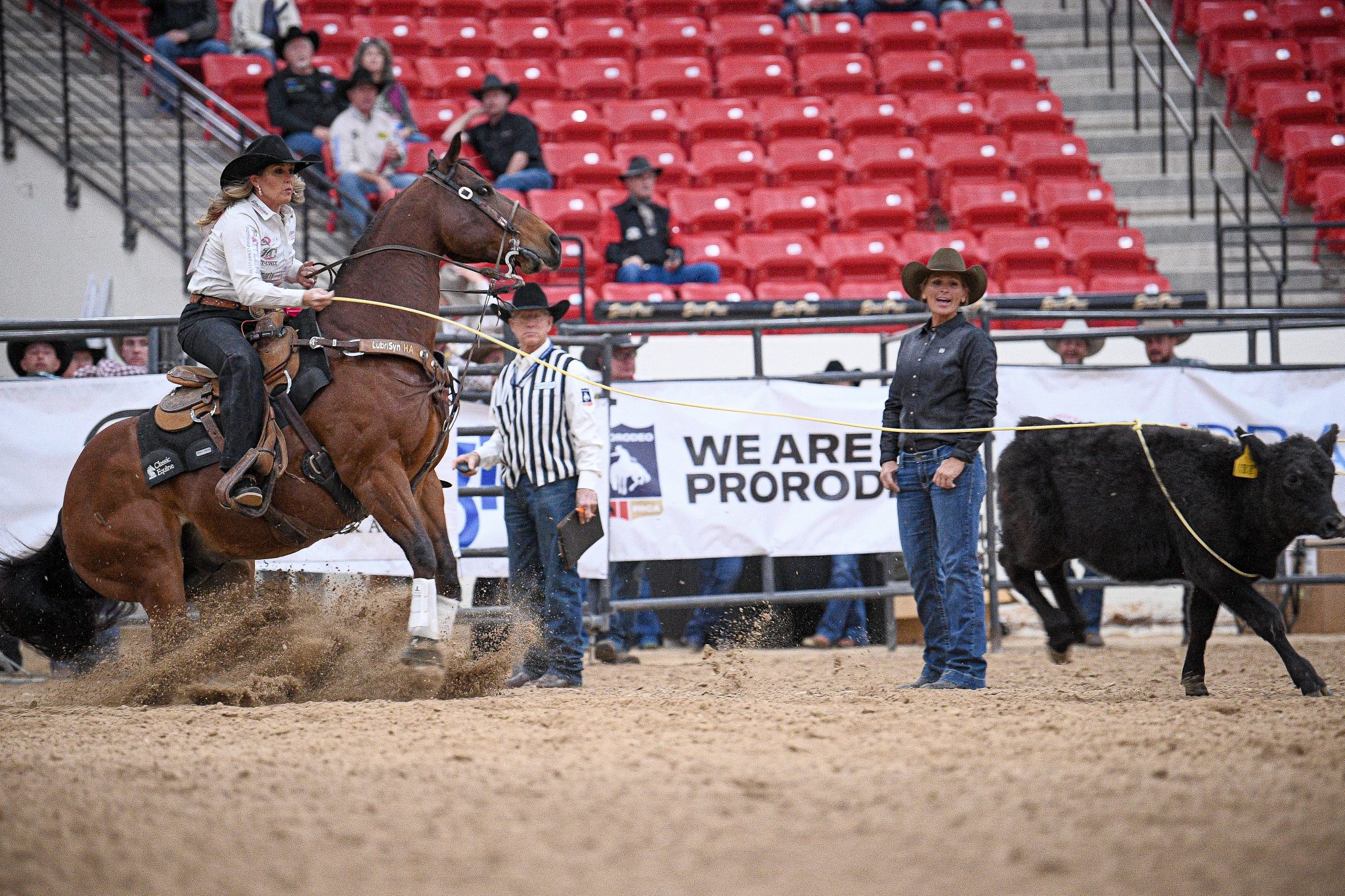We’re kicking off the biggest week of the ProRodeo regular season, and I’ve been working hard on making sure I’m ready. And that means, at least for me and my horse Kevin, that we’re working on crossing over.
When breakaway ropers say crossing over, here’s what they mean, and why it matters:
Crossing over in breakaway roping means getting your horse to position directly behind the calf’s tailhead in order to throw your rope with a clear line of vision to the neck.
The Problem:
Now if your horse doesn’t cross over, your horse blocks your line of vision to the calf. That means you can’t throw fast. It doesn’t matter how good you rope—if your horse isn’t trying to get directly behind the calf, you won’t catch him.
More blogs from Jackie Crawford:
- Crawford’s Kryptonite: Controlling Her Left Hand
- This Breakaway Roper’s Time Management Guide
- My 2023 is All About Discipline
Not Sure?
Maybe you don’t know that your horse isn’t crossing over. Here’s how you can tell in your roping: You’re going to look around your horse’s head, and you’re going to drop your arm, and when you drop your arm, you will top knot a lot of calves from that position. So if you can’t figure out what’s happening to cause you to top knot a lot of them, that could very well be part of it.
Fix It
Kevin has a tendency to not cross over because his shoulder is to the right, and he won’t break as close to the pin as I’d like him to. To curb that and get him crossing over, I score and trot out behind them, and overcompensate the other direction with his head to the right and pick his shoulders and ribs up to the left so he doesn’t fall out.













